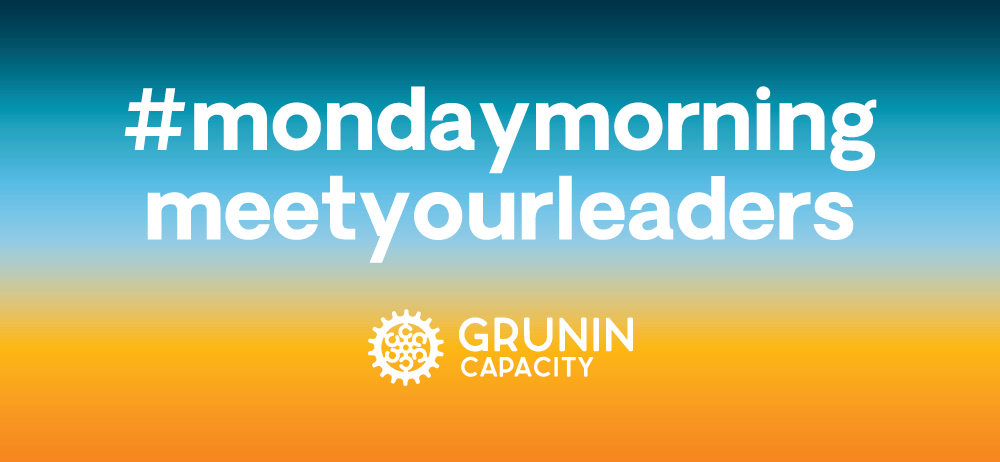On May 7, we hosted the Catapult Institute Webinar: Working the Zoom Room – Tips and Tricks for Using the Zoom Virtual Meeting Platform.
We’ve all been “Zooming” more than we ever imagined we would, and after hearing from a lot of our nonprofit friends that they were looking for more detailed info on the ins and outs of zoom, we asked our partners at Support Center to share their expertise. They have been stress testing Zoom capabilities for the last six weeks, and this session explored some of the most commonly utilized features like polling, breakout rooms, screen sharing as well as some creative ways to use Zoom for your virtual happy hours and online family get togethers (e.g. screen share pictionary).
We ended the webinar using the whiteboard feature and everyone left their mark!
We have a great list of resources for you to utilize all of the features (and all of the fun) of Zoom in the future:
- Working the Zoom Room Webinar Video (facilitated by Keith Timko, Executive Director/CEO at Support Center and Yvette R. Murry, President/COO of YRM Consulting Group, LLC)
- Q&A Sheet from Working the Zoom Room
- Zoom video tutorials
As we hear more questions about Zoom, we will add to the list. Stay tuned!
On April 29, we hosted the Catapult Institute Webinar: How to Engage Donors and Raise Emergency Funds During the Covid-19 Crisis, facilitated by fundraising expert, Amy Eisenstein.
She led the discussion on raising funds through the COVID-19 crisis. She talked about if and how you should be raising money now, and how to leverage the opportunity to build relationships with your biggest donors and pivot your fundraising to emergency needs.
Amy has a wealth of resources on her website and we wanted to highlight a few for you:
- Fundraising Through the Crisis – free weekly online townhall-style sessions to address the most pressing issues facing fundraisers and the nonprofit sector
- 5 Great Examples of Electronic Donation Solicitations During Covid-19
- 9 Unusual Ways You Can Spread Joy Remotely to Staff and Donors
- Covid-19 Creates New Ways to Solicit Donors
- Inspiration and Resources for Fundraisers During the Covid-19 Crisis
- And a lot more on her blog!
We look forward to hosting the next webinar soon. Keep checking our Grunin Capacity blog for more resources!
William Salcedo
Meet William Salcedo, Executive Director of Big Brothers Big Sisters of Coastal and Northern New Jersey
1. What is one of the most important qualities of a great leader?
I believe the ability to identify and appreciate the differences that others bring to the table, and how to best utilize those strengths and abilities is one of the most important qualities a leader has to make a great team. And behind every great leader is a great team.
2. How does your organization take our community to the next level?
Big Brothers Big Sisters takes social responsibility to the next level by creating a personal relationship with a volunteer and a youth in the community. These mentoring relationships elevate the community in two basic ways. It is a platform to connect people to purpose. Our mentors consistently say they initially volunteered to change a child’s life but in doing so their lives were enriched with a sense of purpose and deeper commitment to their community. The second way is by fulfilling our vision that all youth achieve their full potential. This is done one kid at a time, but collectively that means reaching over 800 kids a year. Their community cares about them, and they in turn care about themselves, their future, and their community.
3. What is your favorite thing to do in your spare time?
You can catch me at Bay Head Beach on the weekends, where I love putting my feet in the sand and reading the newspaper.
4. What is your favorite food/recipe and why?
Hands down, my favorite food is a bowl of Seafood Gumbo. I usually make a pot of gumbo and provide a taste of New Orleans to my staff, neighbors, and friends during the winter months. I also make it on game day because it helps the New Orleans Saints to make the playoffs – not that I’m superstitious or anything.

On Friday, February 28, we held our first Catapult Institute workshop of 2020, Strategically Building Your Board of Tomorrow. The workshop was facilitated by Susan Meier, Principal of Meier and Associates. Nonprofit executives and board members learned about the board building cycle, building a leadership pipeline, board member responsibilities, diversity and inclusion and much more. Susan energized the room and the workshop was very interactive. Not only did we learn from Susan, we learned from our peers during the Q&A sessions and table work. The conversations continued over lunch, during the Innovative Lab Lunch.
We look forward to the next workshop on April 24 (Social Entrepreneurship 101- How Nonprofit Organizations Use Entrepreneurial Thinking to Solve Social) and to continuing to navigate the 6 “C”s of Nonprofit Sea Change: Capacity, Curiosity, Conversation, Collaboration, Creativity, and Compassion.
A copy of the first session workbook can be downloaded here: GruninCapacityWorkshop1Workbook
For photos from the day, check out our Facebook photo album!
Grunin Capacity ‘Book of the Month’
The task of building a nonprofit board requires being strategic about identifying and cultivating potential board members. The board building cycle continues after recruitment with creating and sustaining a culture of learning, engagement, and self-assessment that values the input of all members.
The third edition of The Board-Building Cycle describes board building as continuous cycle with three interconnected phases:
- Strategic recruitment
- Effective board engagement
- Intentional revitalization
Why do we like this book?
This book not only features BoardSource’s current thinking and recommendations regarding board composition and board member identification, cultivation, recruitment, orientation, engagement, evaluation, and rotation, it also introduces BoardSource’s new board matrix and other helpful worksheets and tools.
About the Author
SUSAN MEIER – Susan Meier, Principal at Meier and Associates, brings over 28 years of governance and nonprofit experience to her work. From 2004 to 2011, Susan served as the vice president of consulting and training for BoardSource, the nation’s premier governance resource for nonprofit organizations. She works collaboratively with nonprofit executives and board leadership to identify governance challenges and opportunities and to implement proven strategies to address a broad array of governance issues and needs and the work of high performing boards.

Ask anyone in the nonprofit world what their biggest challenges are and fundraising is almost always near the top of the list. For an individual serving on a nonprofit board, fundraising is the most crucial part of their service to the organization. The board as a group is tasked with ensuring that the organization is well resourced to advance its mission. Success begins with how well the board understands its responsibilities as a group and individual role in collaborating with executives, staff, and volunteers.
BoardSource, and its global network of leaders, are on a mission to inspire and support excellence in nonprofit governance and board and staff leadership.
In Fundamental Topics Of Nonprofit Board Service Fundraising, BoardSource shares a resource list of guides, tools, templates, and infographics, that cover many aspects of fundraising, including board and staff roles and responsibilities, the development process, techniques, and methods, increasing board member engagement, and evaluating performance.
About this Bloom Series
Grunin Capacity is driven to support nonprofits and nonprofit leaders with the tools, knowledge, and support to accelerate their impact. In this twice-a-month series, we share resources from our network related to Advocacy, Boards, and Governance, Diversity, Equity, and Inclusion, Employment, Ethics & Accountability, Financial Management, Fundraising, Impact, Measurement, Leadership, Social Enterprise, Social Media, and Strategic Planning. Want to contribute to our garden of knowledge? Please, complete the form below.
Grunin Capacity ‘Book of the Month’
In recent years there has been a trend towards decentralized organizations as nonprofits strive to contend with complex social problems, limited resources, and an increasing rate of change. “The Starfish and the Spider: The Unstoppable Power of Leaderless Organizations” offers insights about the benefits and challenges of centralized organizations and decentralized organizations. Traditional top-down centralized organizations are like spiders, but now starfish organizations (decentralized organizations) are changing the face of business and the world. The book’s authors also explore examples of hybrid organizations that enable organizations to evolve, retool, and cultivate a shared leadership model where everyone is empowered to affect change. This book is an excellent read for all nonprofit professionals regardless if your organization is a startup or longstanding institution.
Why do we like this book?
Social change requires massive collaboration, innovation, and co-leadership. At the Grunin Foundation, we invest in people because when members of a community are empowered to drive solutions amazing things can happen.
About the Authors
ORI BRAFMAN is a lifelong entrepreneur in business, government and the nonprofit sector. Born in Israel and raised in El Paso, Texas, Brafman is a graduate of the University of California at Berkeley and Stanford Business School. His projects include co-founding Courtroom Connect, a wireless network company as well as leading political and advocacy campaigns for healthy food and other public benefit projects.
ROD BECKSTROM is also an American author, high-tech entrepreneur from the Silicon Valley. He holds a BA and MBA from Stanford and was a Fulbright Scholar. Beckstrom founded CATS Software Inc, and has served on various private and nonprofit boards.
About the Series
At Grunin Capacity, we believe that leaders build trust through honest and transparent communication. Building authentic relationships with our collaborators allows us to create genuine and compassionate partnerships towards shared goals. Every 1st and 3rd Monday, our #mondaymorningmeetyourleaders interview series will recognize exceptional leaders who are advancing innovative solutions and bold strategies for the Central Jersey Shore. Leaders will share insights on navigating the 6 “C”s of Nonprofit Sea Change: Capacity, Curiosity, Conversation, Collaboration, Creativity, and Compassion. Follow us on Facebook and Instagram for updates on this series. Want to nominate a leader? Please complete the form below.


